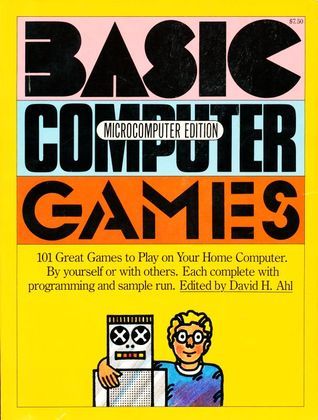What do you think?
Rate this book


183 pages, Paperback
First published June 1, 1978
Obviously, the fastest way to have some software debugged is to put it into the hands of many thousands of users.
100 INPUT "WHAT ARE YOUR WIDTH AND LENGTH";H,V
102 IF H<>1 AND V<>1 THEN 110
104 PRINT "MEANINGLESS DIMENSIONS. TRY AGAIN.":GOTO 100
110 DIM W(H,V),V(H,V)
102 IF H>1 AND V>1 THEN 110
The sorting algorithm used is highly inefficient—as any reader of Creative Computing will recognize, this is the worst possible sort for speed. But the program is good fun and that’s what counts here.